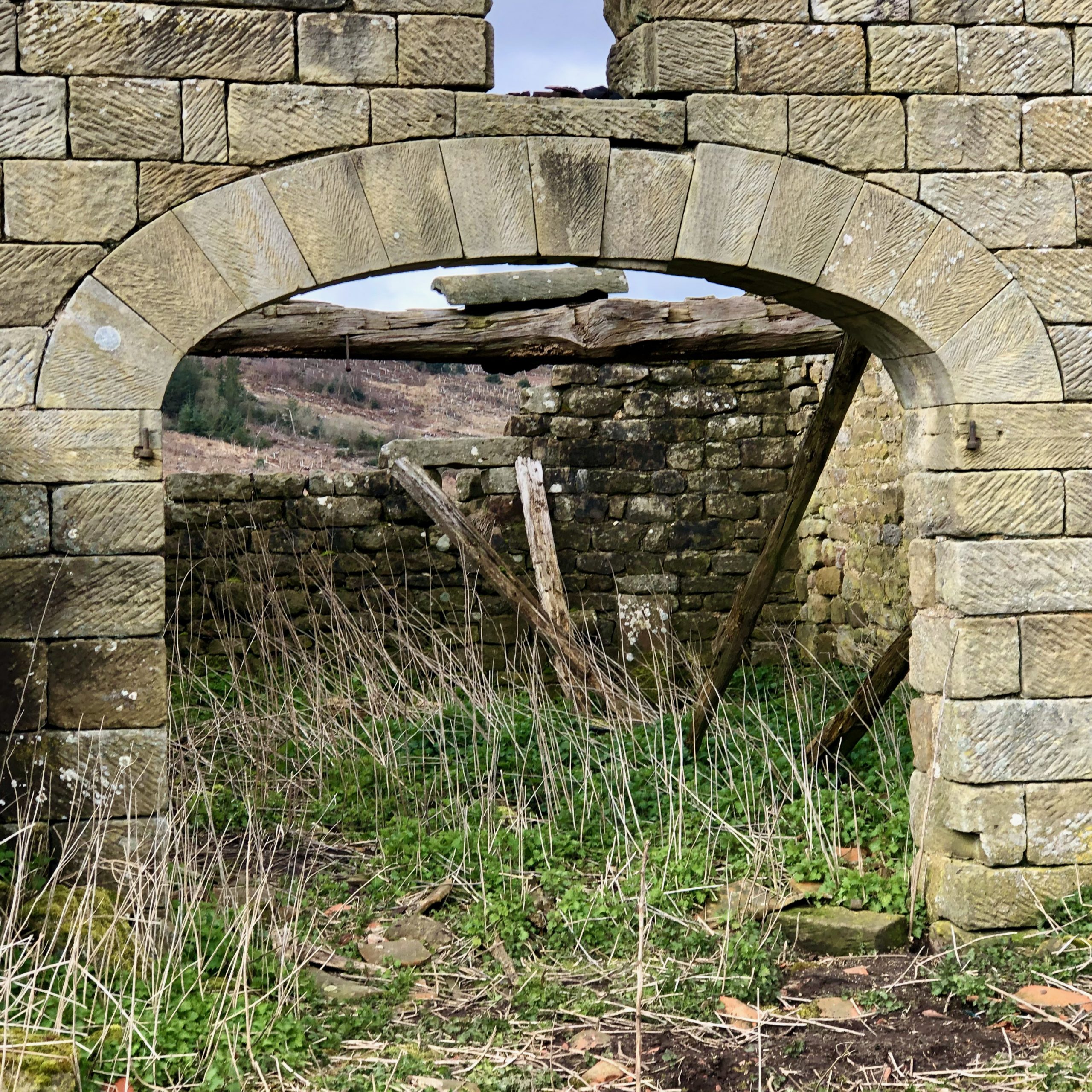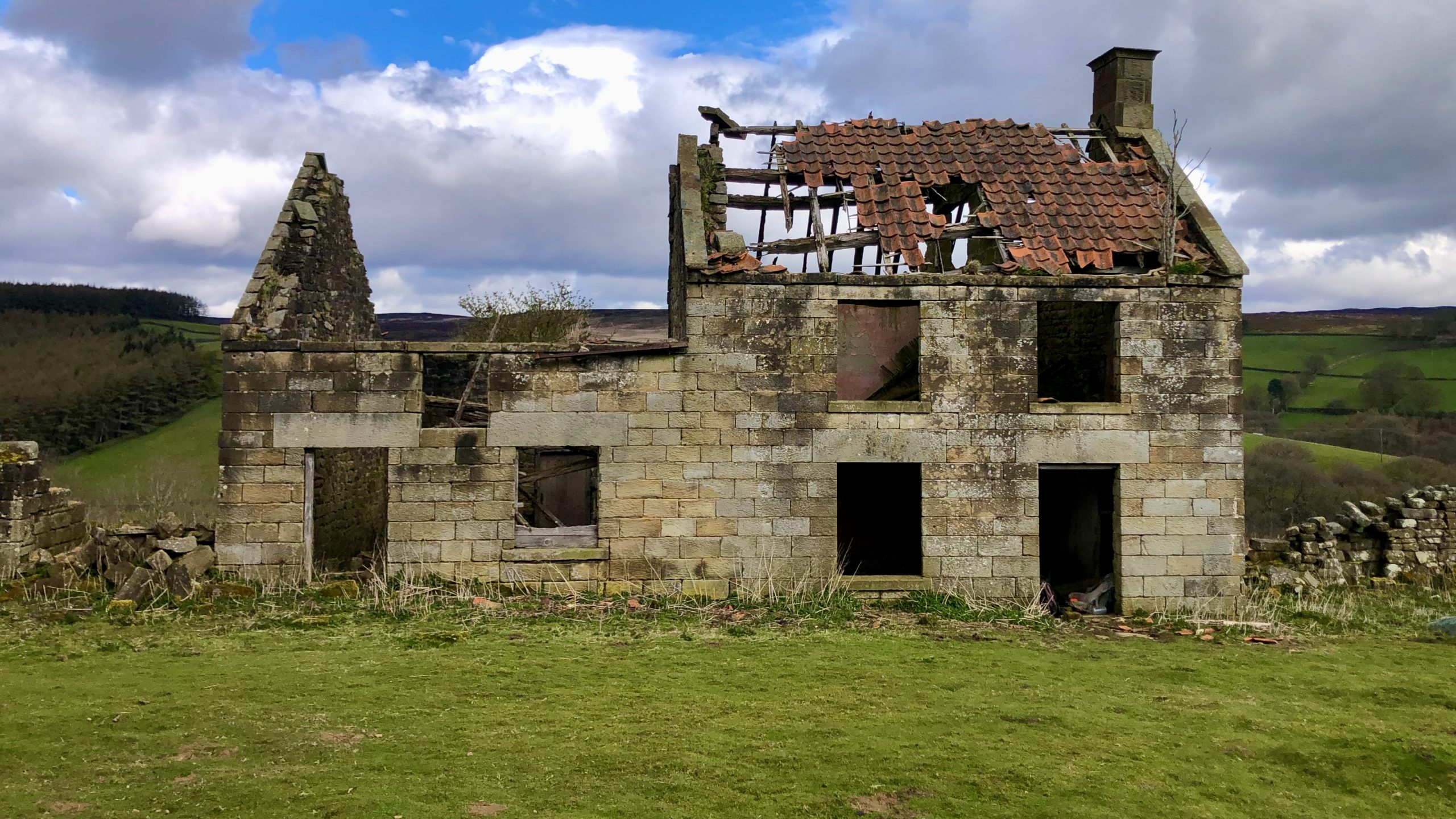In the moorland dales, the quality and excellence of available building stones are the primary factors that have influenced building construction. The Jurassic rocks have been worked in numerous quarries in all the dales and provided an abundance of stone, which has been used to build abbeys, churches, mansions, bridges, buildings in Teesside’s towns, as well as the houses in villages and farmhouses on the hillsides.
The stone, known as freestone, is easy to shape when it is still green, but hardens once exposed to the air. It is typically laid in horizontal layers and separated by thin layers of sand, silt, or clay. The colour of the stone ranges from yellow to dark brown, sometimes with a blueish tinge when stained by heather. The stone is extracted in large blocks and when cut, the resulting wallstones are usually 9 or 10 inches high. These large, evenly cut stones are typically laid in courses. This is the method used to build Stork House, a remote, ruined farmstead in Bransdale, a National Trust property.
The Stork House we see today as ruins was built in the 19th century as an extension to an existing late 17th or 18th-century building, the northwest gable of which remains as the right-hand gable in the photo. The 19th century masonry is coursed, squared sandstone rubble with random tooling, or ‘scutching’.
Prior to the mid-18th century, masons constructed walls either by using rubble walling or courses of rough-dressed squared oblong wallstones. However, after that date, they began utilising the properties of the local stone to develop techniques for dressing the face of stonework. These methods are familiar to those with a keen eye for stonework, and the most frequently are seen as herringboning and scutching.
To face the stone, a mason will place it on its end and use a scutching hammer. This hammer has different bits of varying widths that can be fitted into either end. The mason will strike the back edge of the bit to create shallow oblong marks on the stone. These marks can be arranged in two different patterns — either spaced out in rows or alternating to form a basketwork pattern. With skill, a scutcher can dress a stone almost as if they were chiselling it, but much more quickly. This facing technique was, therefore, sometimes used to dress all sides of the stone.
Scutching gained popularity during the 19th and early 20th centuries, while herringbone was a finish used earlier. It’s probably too much of a stretch to say that the inspiration for herringbone came from the shape of the backbone and bones of a herring or kipper. There are two forms of herringbone: a plain ribless style that was mostly used on farm buildings and simple dwellings, and a finely axed draughted style that shows a neat rib running horizontally across the centre of the wallstone. The latter was typically used on better class dwellings.

You can see the two different types of herringbone patterns on the stonework of an adjacent barn1‘MNA144472 | National Trust Heritage Records’. 2015. Nationaltrust.org.uk <https://heritagerecords.nationaltrust.org.uk/HBSMR/MonRecord.aspx?uid=MNA144472> [accessed 13 April 2023]. The three-centred arch has a ribbed pattern, while the wallstones have a ribless pattern. Overall, it seems to be a higher quality finish than the farmhouse.
It is believed that the Stork House holding was either founded as a medieval monastic grange by Rievalux Abbey or was part of one. Although it is not entirely certain, it is likely that the farmstead is located on the same site as the original grange2‘MNA144408 | National Trust Heritage Records’. 2015. Nationaltrust.org.uk <https://heritagerecords.nationaltrust.org.uk/HBSMR/MonRecord.aspx?uid=MNA144408> [accessed 13 April 2023].
General Source: Hartley, Marie and Joan Ingilby. “Life and Tradition on The Moorlands of North-East Yorkshire”. Page 96-102. J.M. Dent & Son. 1990. ISBN 1 870071 54 9.
- 1‘MNA144472 | National Trust Heritage Records’. 2015. Nationaltrust.org.uk <https://heritagerecords.nationaltrust.org.uk/HBSMR/MonRecord.aspx?uid=MNA144472> [accessed 13 April 2023]
- 2‘MNA144408 | National Trust Heritage Records’. 2015. Nationaltrust.org.uk <https://heritagerecords.nationaltrust.org.uk/HBSMR/MonRecord.aspx?uid=MNA144408> [accessed 13 April 2023]

Leave a Reply